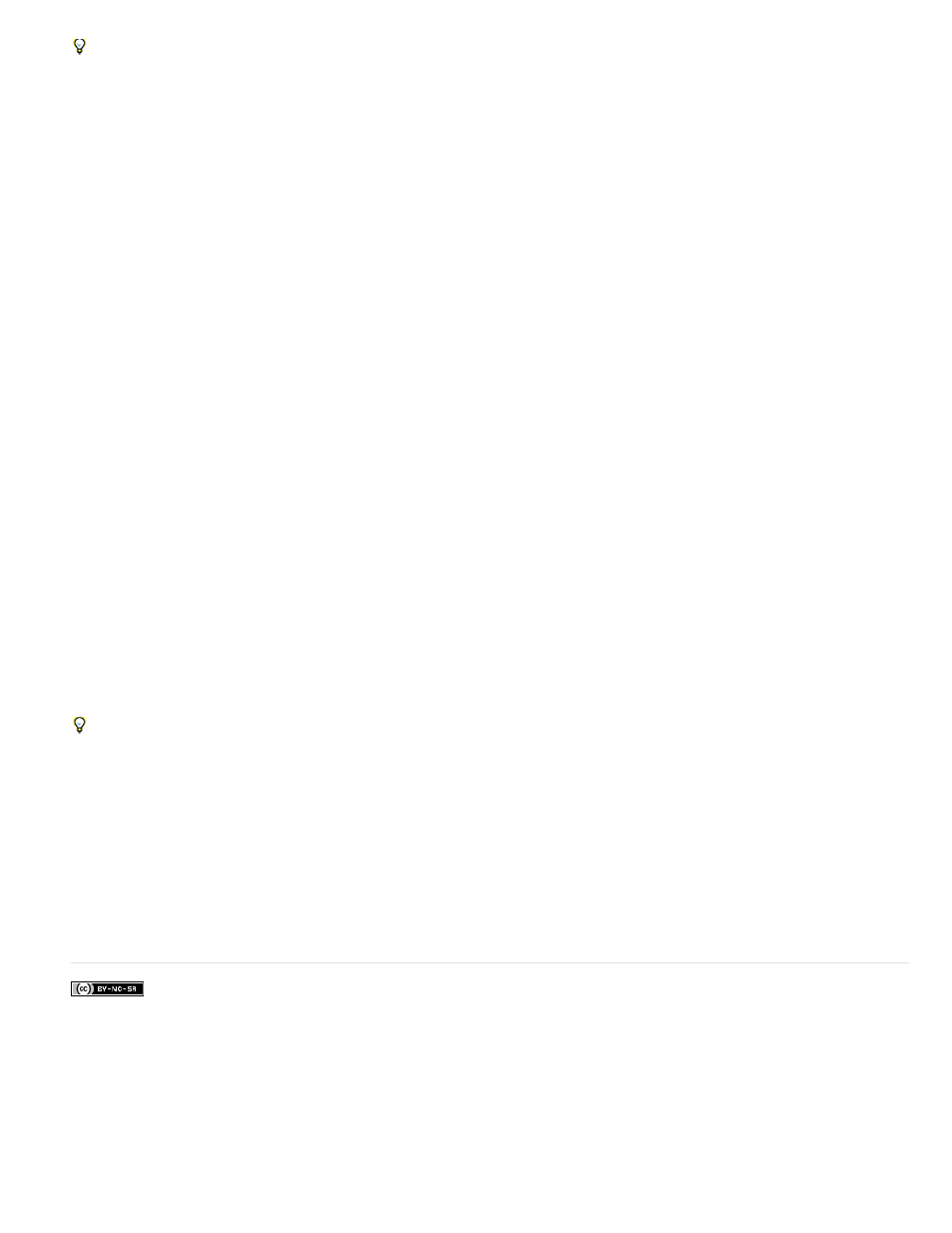Adobe InDesign User Manual
Page 536

Facebook posts are not covered under the terms of Creative Commons.
Page Transitions
Hyperlinks
Movies and sound clips
Color
Text
Images
Transparency
3D attributes
You can add navigation buttons that are preformatted with Go To Next Page and Go To Previous Page actions. Choose Sample Buttons from
the Buttons panel menu. See
All page transitions work well in Flash Player. In addition to page transitions that appear when you turn the page, you can add
include an interactive page curl during export that lets you drag corners of pages to turn them.
Create links to websites or to other pages in the document. Hyperlinks are broken in FLA files.
Movies and sound clips are included in an exported SWF file if they’re in a supported format, such as SWF, FLV, F4V,
and MP4 for movies and MP3 for sound clips.
When you export to FLA, only the poster image is included in the FLA file. Supported media files appear in a resources folder saved in the same
location as the exported FLA file.
Conversion issues
SWF and FLA files use RGB color. When a document is exported to SWF or FLA, InDesign converts all color spaces (such as CMYK and
LAB) to sRGB. InDesign converts spot colors to equivalent RGB process colors.
To avoid unwanted color changes in artwork with text with transparency, choose Edit > Transparency Blend Space > Document RGB. To avoid
unwanted color changes in images with transparency, avoid using a lossy compression during export.
When exporting to SWF or FLA, you can determine whether text is output as Flash text or converted to outlines or pixels. Text exported as
Flash Classic Text remains fully editable when the FLA file is opened in Adobe Flash CS5 Professional and can be searched in web browsers
when saved as SWF files.
When you export images to SWF or FLA, you can change image compression, JPEG quality, and resolution settings during export.
When you export images to FLA, an image placed multiple times in your InDesign document is saved as a single image asset with a shared
location. Note that a large number of vector images in the InDesign document may cause performance problems in the exported file.
To reduce file size, place repeating images on master pages, and avoid copying and pasting images. If the same image is placed multiple times in
the document and not transformed or cropped, only one copy of the file is exported in the FLA file. Images that are copied and pasted are treated
as separate objects.
By default, a placed Illustrator file is treated as a single image in the FLA file, whereas an Illustrator file that’s copied and pasted generates many
individual objects. For best results, place the Illustrator image as a PDF file instead of copying and pasting from Illustrator. Copying and pasting
results in multiple editable paths.
You can change preference options to make sure that Illustrator objects are pasted as one object instead of a collection of small vectors. In
Illustrator File Handling & Clipboard preferences, select PDF and deselect AICB (No Transparency Support). In InDesign Clipboard Handling
preferences, select both Prefer PDF When Pasting and Copy PDF To Clipboard.
Before exporting to SWF, make sure that transparent objects do not overlap any interactive element, such as a button or hyperlink.
If an object with transparency overlaps an interactive element, the interactivity may be lost during export. You may want to flatten transparency
before exporting to FLA.
In some instances, choosing a lossy compression reduces the quality of images with transparency. When exporting, choose PNG (Lossless) to
improve the quality.
3D attributes are not supported in the exported SWF and FLA files.
531
